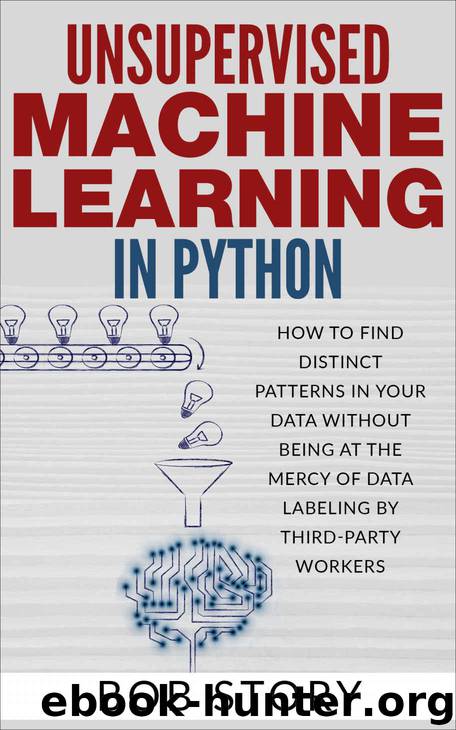Unsupervised Machine Learning in Python: How to Find Distinct Patterns in Your Data Without Being at the Mercy of Data Labeling by Third-Party Workers by Bob Story

Author:Bob Story
Language: eng
Format: azw3, epub
Published: 2017-07-20T07:00:00+00:00
r(k,n) = pi(k)N(x(n), mu(k), C(k)) / sum[j=1..K]{pi(j)N(x(n), mu(j), C(j)) }
When working with the C(k), this is going to mean the covariance of the kth Gaussian. The N9x, mu, C) means the probability density function) of your Gaussian of the data point x and the mean mu and covariance C.
Once you have done this part, it is time to move on to step number two. This step is to go through and recalculate all of the parameters of your Gaussians. This means the pi’s, covariances, and the means. The method for going through and doing this is going to be pretty similar to what we did with the k-means, where we are going to weigh the influence of each sample on the parameter by using the responsibility. If the responsibility of the sample is small, this means that the “x” is going to matter less in the total of the calculation. Let’s look at how we would go through and do this.
Download
Unsupervised Machine Learning in Python: How to Find Distinct Patterns in Your Data Without Being at the Mercy of Data Labeling by Third-Party Workers by Bob Story.epub
This site does not store any files on its server. We only index and link to content provided by other sites. Please contact the content providers to delete copyright contents if any and email us, we'll remove relevant links or contents immediately.
Modelling of Convective Heat and Mass Transfer in Rotating Flows by Igor V. Shevchuk(6353)
Weapons of Math Destruction by Cathy O'Neil(6084)
Factfulness: Ten Reasons We're Wrong About the World – and Why Things Are Better Than You Think by Hans Rosling(4628)
Descartes' Error by Antonio Damasio(3188)
A Mind For Numbers: How to Excel at Math and Science (Even If You Flunked Algebra) by Barbara Oakley(3188)
Factfulness_Ten Reasons We're Wrong About the World_and Why Things Are Better Than You Think by Hans Rosling(3163)
TCP IP by Todd Lammle(3099)
Applied Predictive Modeling by Max Kuhn & Kjell Johnson(2986)
Fooled by Randomness: The Hidden Role of Chance in Life and in the Markets by Nassim Nicholas Taleb(2972)
The Tyranny of Metrics by Jerry Z. Muller(2954)
The Book of Numbers by Peter Bentley(2876)
The Great Unknown by Marcus du Sautoy(2612)
Once Upon an Algorithm by Martin Erwig(2541)
Easy Algebra Step-by-Step by Sandra Luna McCune(2541)
Lady Luck by Kristen Ashley(2496)
Practical Guide To Principal Component Methods in R (Multivariate Analysis Book 2) by Alboukadel Kassambara(2447)
Police Exams Prep 2018-2019 by Kaplan Test Prep(2442)
All Things Reconsidered by Bill Thompson III(2328)
Linear Time-Invariant Systems, Behaviors and Modules by Ulrich Oberst & Martin Scheicher & Ingrid Scheicher(2306)
